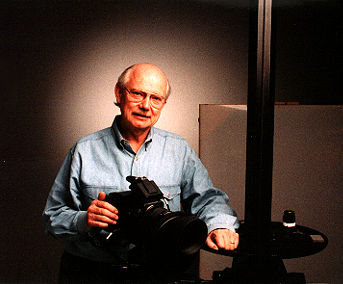Corning Photography Improves on Reality
Corning Photography Improves on Reality

Digital Photography Allows Creation of Images Film Can't Match
The name of the game in photography is capturing light. Shooting objects that reflect light in different ways - say, a black ceramic bowl with a shiny white cup - is a difficult proposition.
"If you shoot it traditionally, the white cup will show too much white to show density in the black," explains Don Corning of Corning Photography. "With our digital system, we can shoot one image for the white area, a second image for the black area, and maybe a third for highlights, then form a composite image with the best of all three."
The result is an image that captures the essence of an object, in a way that traditional photography can't match.
"The image we're giving our client is a better technical image and a more creative image," he adds.
A Digital Pioneer
Corning bought his first digital camera about four years ago, when the technology was in its infancy and its use for high-end studio work was far from the norm.
"Now, we're shooting 80 or 90 percent digital in the studio and we've gone through three generations of cameras," he notes. "Our clients are very comfortable using digital for what we produce because they've gotten incredible results with it. We're booked up to about two weeks in advance."
Images at 400 Megahertz
Waiting for an opening in Corning's schedule is the only part of the process that may move slowly, however. Clients see the images as they're captured and can even make suggestions during the shoot or while the shots are retouched on the computer. It's another advantage over traditional techniques.
"They know exactly what they're getting because they see it before they leave," says Corning.
Since there's no time spent on processing film, clients can frequently take the images from a day's shoot with them at the end of the day, after Corning burns them to CD in his studio. Using digital photos also saves on scanning fees.
Despite the wonders of the new technology, Corning's knowledge, experience, and creativity remains the key to the final image.
"You still have to know where you're going to put the lights, how to capture the image, and what kind of press they'll use to print the image" he explains. "This is just a tool."
Examples of Corning's work can be found on their web site.
Photo: Don Corning uses a state-of-the-art Scitex Leaf Volare digital camera back with his Hasselblad camera body.
Also in this issue...
- TJKM Plays a Key Role in Sunol Grade Fix
- Corning Photography Improves on Reality
- Business Bits
- Executive Profile - David Clausen, Clausen Computer Services
- RIDES Offers Cash, Prizes in Earth Day "Alternative Commute" Event
- Don't Get Shaken Up - April is Earthquake Preparedness Month
- Association Offers Free Emergency Procedures Manual to Tenants
- Business Community Input Sought for Pleasanton Youth Master Plan
- Hacienda Index




